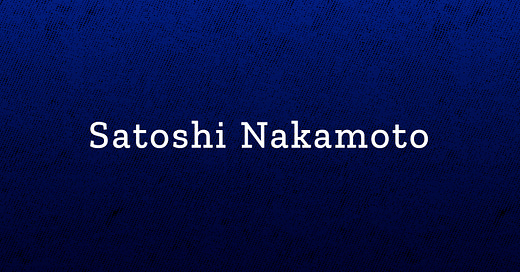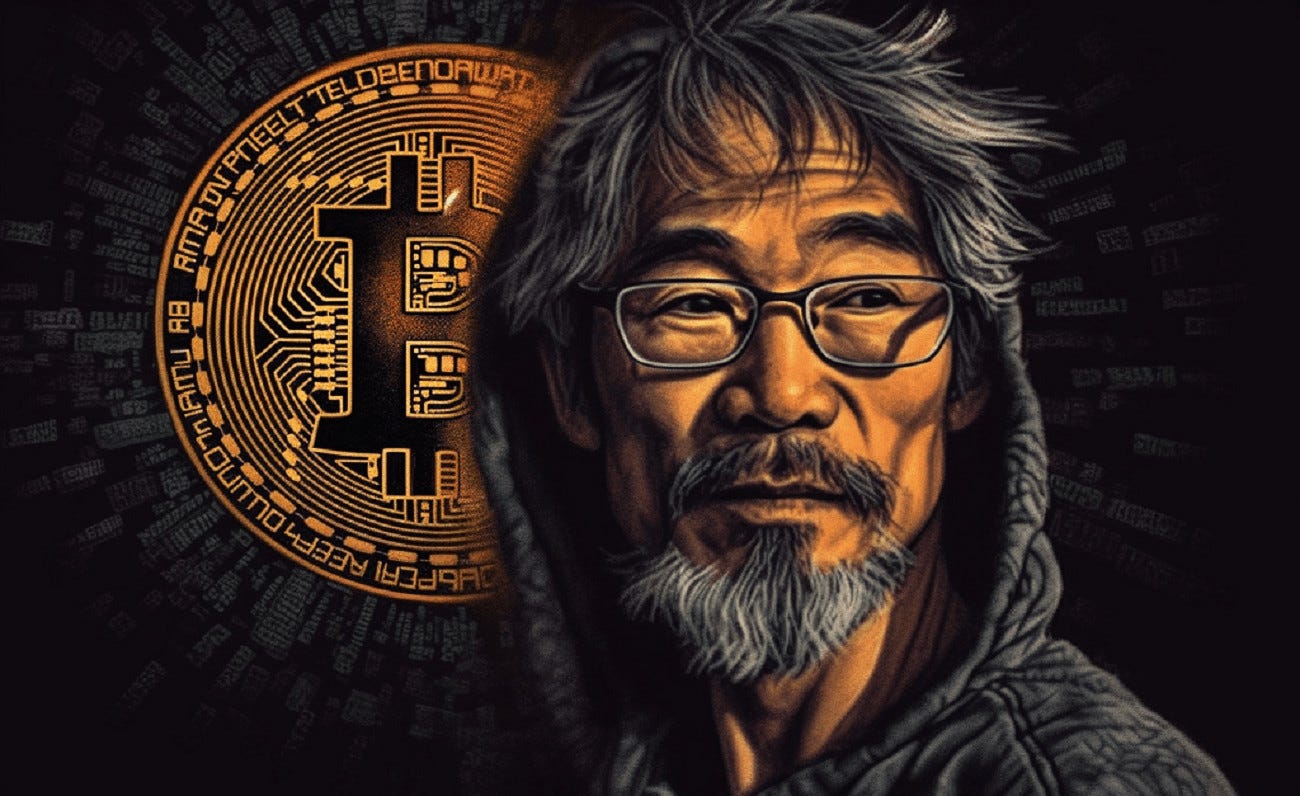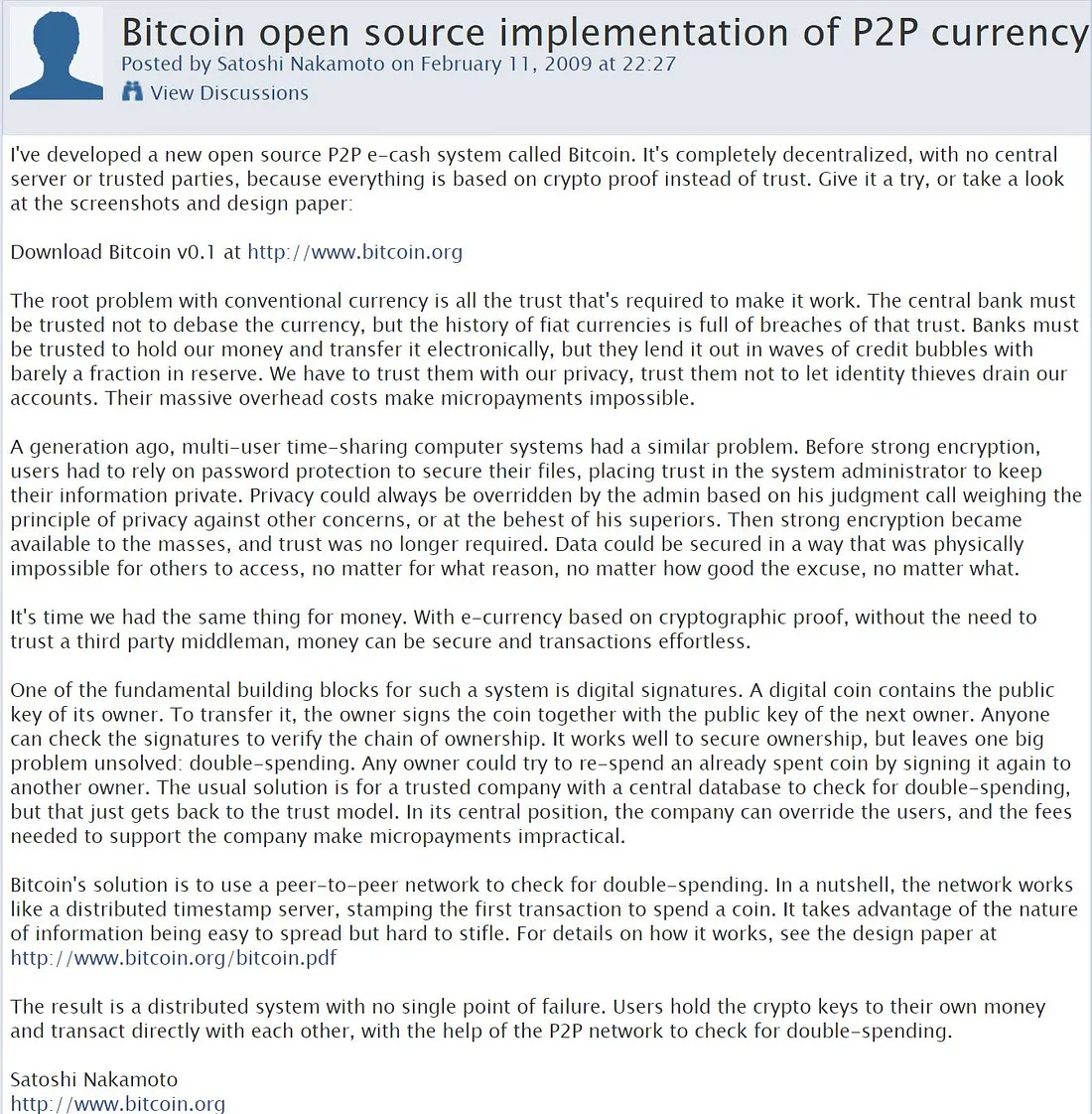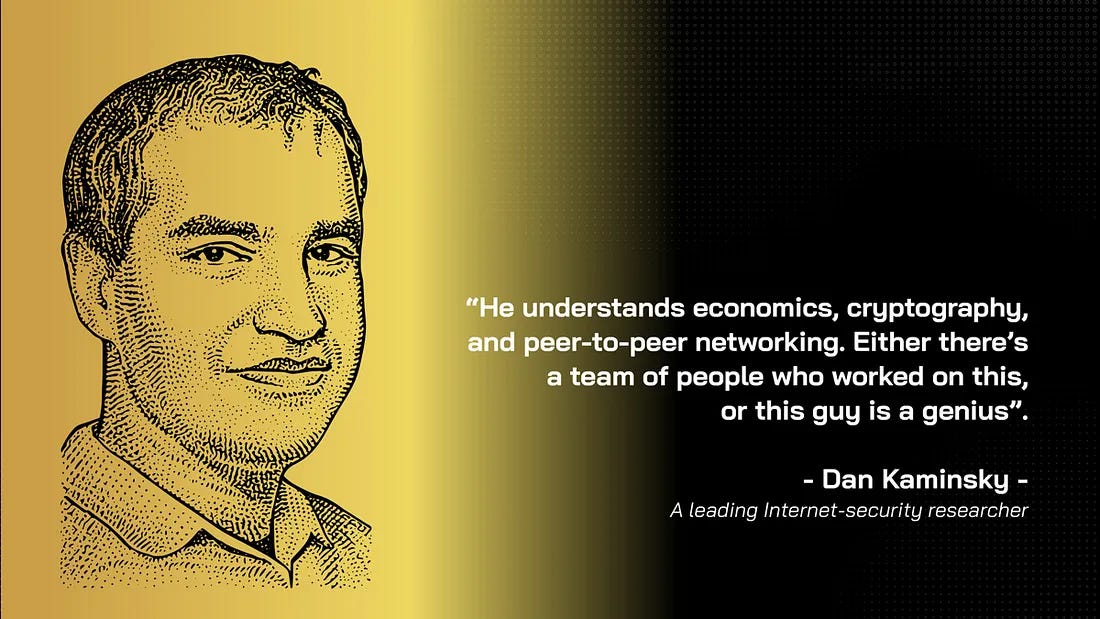Satoshi Nakamoto —the mysterious Bitcoin creator
Satoshi Nakamoto is the name used by the nickname person or group who developed Bitcoin and implemented the first blockchain database.
Hello everyone,
I’m sure that the name Satoshi Nakamoto is not strange to everyone in Cryptocurrency or in Blockchain.
In 2009, a figure claiming to be a 36-year-old Japanese man appeared in the financial world. This person “left” 21 million Bitcoins, then disappeared into cyberspace. More than a decade has passed. Until now, his identity is still unknown. That character is Satoshi Nakamoto.
And it’s me again, I'm Neo — Admin — Community Manager of Optimus Finance and Growth Marketing of LECLE Vietnam. Let’s dive into it.
1. Who is Satoshi Nakamoto?
Satoshi Nakamoto is the name used by the nickname person or group who developed Bitcoin and implemented the first blockchain database. Nakamoto was active in the development of Bitcoin until December 2010.
Though Nakamoto owns a Japanese name and also claimed to be Japanese, most speculation about his identity involves software or cryptography experts in the United States or Europe.
2. The one who invented cryptocurrency
To earn money, most of us have to work hard, some more reckless people counterfeit or steal it, but Satoshi Nakamoto did it in his own way: by inventing his “money”, it’s called cryptocurrency now.
On the evening of January 3, 2009, he generated a new currency called Bitcoin. There was no paper, copper, or silver — just thirty-one thousand lines of code and an announcement on the Internet.
Nakamoto’s invention is called “digital gold” because it has only 21 million Bitcoins. Miners mine Bitcoin using computers to solve complex mathematical problems. The fastest computer would earn the most money.
At first, a single Bitcoin was valued at less than $0.01. But more people gradually began to accept it, and at the end of 2010, its value began to appreciate rapidly. The first real-world transaction happened on May 22, 2010, when a man from Florida, Laszlo Hanyecz, agreed to exchange two $25 pizzas for 10,000 Bitcoin, thereby making May 22 “Bitcoin Pizza Day”. Since then, its value has multiplied exponentially.
3. Timeline of Bitcoin
2007: Satoshi Nakamoto started working on writing the code for Bitcoin.
18/08/2008: He or a colleague registered the domain name bitcoin.org, and created a website at that address.
31/10/2008: He published a white paper describing a digital cryptocurrency, titled “Bitcoin: A Peer-to-Peer Electronic Cash System”
09/01/2009: He released version 0.1 of the Bitcoin software on SourceForge, and launched the network for the first time.
2009 — Mid 2010: He continued to collaborate with other developers on the Bitcoin software, making all modifications to the source code himself.
04/2010: He gave control of the source code repository and network alert key to Gavin Andresen, then disappeared.
4. The appearance of Bitcoin
The anonymity of Nakamoto made many people question whether the creator of Bitcoin was on top of a Ponzi scheme. But it seemed that he was motivated by politics rather than the crime.
It was no coincidence that Bitcoin was born shortly after the crisis of 2008 when liquidity in global financial markets was significantly affected by the housing market collapse. On the same note, when the “too big to fail” bank Lehman Brothers filed for bankruptcy, Nakamoto published an essay on traditional fiat.
“The root problem with conventional currency is all the trust that’s required to make it work,” he wrote. “The central bank must be trusted not to debase the currency, but the history of fiat currencies is full of breaches of that trust.”
Also, in memory of the corruption of fiat currency, in the very first transaction made on the Bitcoin blockchain, the mysterious founder embedded a message that reads, “The Times 03/Jan/2009 Chancellor on brink of second bailout for banks”. It referred to a headline of a news article that appeared that day in The Times in the UK that talked about a second bailout for the banks.
5. The test of a famous figure among hackers
Currently, despite the absence of its creator, Bitcoin still proves its value, but at the beginning, this currency was the target of various “reliable tests”.
2 years after being born, Bitcoin became the target of Dan Kaminsky, a leading Internet-security researcher. Kaminsky was famous among hackers for discovering, in 2008, a deadly error in the Internet that would have allowed a talented coder to take over any website or even shut down the Internet.
He alerted the Department of Homeland Security and executives at Microsoft to the problem and worked with them to patch it. He was one of the most adept practitioners of “penetration testing,” the art of compromising the security of computer systems at the behest of owners who want to know their vulnerabilities.
He decided to investigate Bitcoin and felt it was an easy target.
“When I first looked at the code, I was sure I was going to be able to break it,”
Kaminsky said, noting that the programming style was dense and inscrutable.
“The way the whole thing was formatted was insane. Only the most paranoid, painstaking coder in the world could avoid making mistakes.”
In a windowless basement full of computers in San Francisco, Kaminsky paced back and forth talking to himself, trying to picture the Bitcoin network in his head. He quickly identified nine ways to compromise the system and find points to insert his first attack.
But when he found the right place, a message was waiting: “Attack Removed”. Kaminsky tried other points, but the same thing happened over and over again. He became furious.
“I came up with beautiful bugs, but every time I went after the code there was a line that addressed the problem.”
He was like a burglar who was sure that he could break into a bank by digging a tunnel, drilling through a wall, or climbing down a vent. But on each attempt, he discovered a freshly poured cement barrier with a sign telling him to go home.
“I’ve never seen anything like it,” Kaminsky added.
He pointed out the skills that Nakamoto needed to be able to build Bitcoin successfully.
“He’s a world-class programmer, with a deep understanding of the C++ programming language,” he said. “He understands economics, cryptography, and peer-to-peer networking. Either there’s a team of people who worked on this,” Kaminsky concluded, “or this guy is a genius.”
Kaminsky wasn’t alone in this assessment. Soon after creating the currency, Nakamoto posted a nine-page technical paper describing how Bitcoin would function. That document included three references to the work of Stuart Haber, a researcher at H.P. Labs, in Princeton.
Stuart Haber is a director of the International Association for Cryptologic Research and knew all about Bitcoin.
“Whoever did this had a deep understanding of cryptography,” Haber said. “They’ve read the academic papers, they have a keen intelligence, and they’re combining the concepts in a genuinely new way.”
6. Bitcoin is the “game-changer”?
The value of Bitcoin has increased too much, but the identity of its creator is still unknown. Before the appearance of Bitcoin, there was no record of any programmer with that name. Nakamoto used an e-mail address and a website that were untraceable.
In 2009 and 2010, this mysterious figure published hundreds of articles in perfect English, and although he talked to other software developers to ask them to help improve the code, Nakamoto never revealed any personal information.
Then, in April 2011, he sent a note to a developer saying that he had “moved on to other things.” He has not been heard from since.
Bitcoin is known as the game-changer, and its creator is undeniably given that title. In the era of technology, this means money, power, and attention. As the creator of money, Nakamoto probably didn’t care about having more money, but power and attention are hard to resist. So why did Nakamoto refuse that privilege and keep a low profile?
Some people thought it was a marketing trick because mystery always attracts curiosity. But it’s been 13 years since Bitcoin was born, if its founder used anonymity as a gimmick, the trick has dragged on too long. Perhaps Nakamoto had a better reason to hide: those who experiment with currency, thereby “desecrating” the sacred ground of institutions, often end up in trouble.
Online currencies aren’t an exception. In 2007, the federal government filed charges against e-Gold, a company that sold a digital currency redeemable for gold.
The government argued that the project enabled money laundering and child pornography since users did not have to provide thorough identification. The company’s owners were found guilty of operating an unlicensed money-transmitting business and the C.E.O. was sentenced to months of house arrest.
Nakamoto seemed to be doing the same things as these other currency developers. He was competing with the dollar and he insured the anonymity of users, which made Bitcoin attractive to criminals.
In the winter of 2011, a website was launched called Silk Road (it’s called the dark web) which allowed users to buy and sell heroin, LSD, and marijuana as long as they paid in Bitcoin.
7. Closing thoughts
Since its creation, Bitcoin has had a storied past, and not without scandals. Originally designed to be a decentralized and borderless alternative to fiat currency, Bitcoin has been slowly centralized to some degree. Large banks and financial institutions, for example, have begun opening crypto trading desks and custody services for crypto.
It is a genuine possibility that people are going to embrace Bitcoin in more everyday transactions. Many organizations believe that Bitcoin may soon become the “currency of choice” in the global trading scene. However, Bitcoin’s blockchain also needs to evolve and be able to handle more transactions in a short time. Until then, we shall wait and see.
What about your thoughts? If you want to know further about it, don’t hesitate to share it with us! 😀
This post is for educational purposes only. All materials I used were the different reference sources. Hope you like and follow us and feel free to reach out to us if there is an exchange of information. Cheers! 🍻
#satoshi #nakamoto #bitcoin #btc #blockchain














